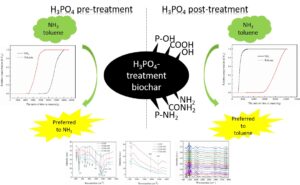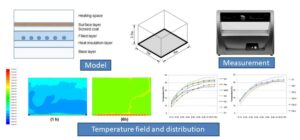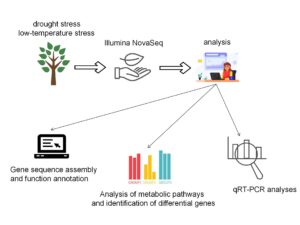Research Articles
Latest articles
- Researchpp 3856-3869Sjöstrand, B., Karlsson, C.-A., Barbier, C., and Henriksson, G. (2023). “Hornification in commercial chemical pulps: Dependence on water removal and hornification mechanisms,” BioResources 18(2), 3856-3869.AbstractArticlePDF

Understanding cellulose hornification provides crucial information regarding drying of pulp, paper, and other cellulosic materials as well as recycling them. By measuring drainage, fiber width, and water retention value of hardwood and softwood pulps before and after sheet forming and after different drying procedures at different achieved levels of solids, the hornification was evaluated. The water retention value was also measured for the pulps when dried from acetone to observe what happens when hydrogen bonds are not available in the liquid phase. The drainage and fiber width decreased with increasing solids content; the fibers became increasingly stiff with increased water removal. Water retention measurements indicated that hornification is a stepwise process with large drops in fiber flexibility as soon as the fibers are being processed and later after a certain amount of water has been removed. In sum, the fibers must achieve a certain solids content to show hornification, and hydrogen bonds in water draw the cellulose surfaces together to create hornification. The mechanism of hornification is believed to be driven by hydrogen bonds and related to the distance between cellulose chains inside the fiber wall. Other types of bonds are probably also present and help with the irreversibility of hornification.
- Researchpp 3870-3884Su, M., Li, N., Huang, T., and Zhu, B. (2023). “Competitive interactions of NH3 and toluene with biochar modified by pre- and post-treatments of H3PO4 in dual adsorption systems,” BioResources 18(2), 3870-3884.AbstractArticlePDF

Biochar modified by H3PO4 treatment can be used to purify malodorous gases during bio-drying of sludge, but the current understanding of multi-component adsorption of malodorous gases through biochar is limited. This study examined the adsorption mechanism of mixed malodorous gases including toluene and ammonia (NH3) on two kinds of biochar modified via H3PO4 pretreatment before and after pyrolysis. The biochar obtained by H3PO4 pretreatment of biomass before pyrolysis (C550) preferred to adsorb NH3 whether in the single or the dual system. In contrast, the biochar obtained by H3PO4 reprocessing after pyrolysis of biomass (C350-550) tended to adsorb toluene in the dual system but was more efficient in absorbing NH3 in the single system. The pseudo-second-order kinetic model indicated the synergistic adsorption between NH3 and toluene for all biochar samples. In-situ DRIFTS of C350-550 during adsorption demonstrated the formation of amino functional groups caused by NH3 chemical adsorption with -OH (or -COOH) in the dual system. These increases in basic groups on C350-550 could enhance the surface zero potential point of C350-550, thereby improving the non-polarity of C350-550 and benefit the adsorption of weak polar toluene.
- Researchpp 3885-3894Hosseini, A. (2023). “Comparison of variability in leaves and roots nutrient contents of Persian oak (Quercus brantii Lindl.) in drought affected declining forests,” BioResources 18(2), 3885-3894.AbstractArticlePDF
Drought-induced crown dieback depends on plant nutrient status. This research examined the leaves and roots nutrients of Persian oak trees (Quercus brantii Lindl.) under the effects of drought and tree decline. The leaves and roots of oak trees were sampled randomly on the four main sides of their crown to analyze the N, P, K, Ca, and Mg. In healthy and declining trees, the N, P, and K content in the leaves was higher than in the roots, while the Ca content in the leaves was lower than in roots. The N and P in the roots of healthy trees had decreasing temporal changes, but these elements did not have significant temporal changes in the roots of declining trees. Leaf P showed decreasing temporal changes. The temporal decrease of root N and P and leaf P showed a negative effect of drought on Persian oak trees by reducing their ability to absorb water and nutrients and transfer them to their leaves. The higher concentration of elements in the leaves of oak trees, in addition to showing the decrease in the absorption of elements by the roots from the soil, can indicate a protective mechanism of oak trees against drought stress.
- Researchpp 3895-3908An, Q., Zhou, Z.-G. Wang, Y.-H., Guo, S., Chen, Z., Yuan, Y.-N., Sun, X.-Q., Yang, Y.-L., Zhang, T.-X., and Han, M-L. (2023). “Laccase produced by Coriolopsis trogii and Cerrena unicolor with the mixed of metal ions and lignocellulosic materials,” BioResources 18(2), 3895-3908.AbstractArticlePDF
Coriolopsis trogii and Cerrena unicolor were investigated for laccase production in submerged fermentation with different nutrient medium containing metal ions and lignocellulosic materials. The maximum laccase activity of C. trogii Han751 was 8584.44 ± 98.45 U/L and was obtained from nutrient medium 7. However, the maximum laccase activity of C. unicolor Han 849 was 16144.26 ± 635.30 U/L from nutrient medium 9. Thus, the capacity of secreting laccase of C. unicolor Han 849 was superior to that of C. trogii Han751. Different fungal species have different medium components suitable for laccase production. The content of CuSO4·5H2O and MnSO4 in nutrient medium with the concentration of 0.25 g/L and 0.151 g/L, respectively, was more beneficial to C. trogii Han751 secreting laccase. However, the vital components of nutrient medium that contribute to the laccase activity of C. unicolor Han 849 were corncob, glucose, and CuSO4·5H2O, with the corresponding concentrations of 1 g/flask, 5 g/L, and 0.25 g/L, respectively. The results will contribute to the development of new methods to produce low-cost laccase.
- Researchpp 3909-3922Zhou, S., Cao, J., Zhang, Z., Wang, H., and Liu, J. (2023). “Thermal properties of radiant floor surface materials and numerical evaluation of the thermal performance,” BioResources 18(2), 3909-3922.AbstractArticlePDF

A Hot Disk thermal constant analyzer was used to obtain the thermal parameters of composite boards, solid wood floor, and ceramic tiles (CT). FLUENT software was used for the model establishment and the temperature field simulation, and the effects caused by different surface materials were analyzed. A 2D unsteady model was constructed to analyze floor surface temperature and indoor temperature fields in an enclosure space. Comparison of temperature fields caused by different materials showed that both steady indoor temperature and surface temperature of CT were the highest, which is due to its good thermal properties. Thermal conductivity and thermal capacity are the two main factors affecting floor thermal performance in the initial hours, while thermal conductivity is the key factor in the steady period. For the compared floor materials, CT and Sindora glabra (SG) are the optimal choices from the perspective of thermal performance, while composite boards are almost the same in thermal performance.
- Researchpp 3923-3937Čavlović, A. O., Bešlić, I., Pervan, S., and Prekrat, S. (2023). “Characteristics of thermally modified hardwood dust in determining workers’ occupational exposure,” BioResources 18(2), 3923-3937.AbstractArticlePDF
Thermal modification of wood changes its mechanical properties, generally reducing its strength, such that it is more easily chipped during processing than untreated hardwood. This study presents specific parameters used in the determination of mass concentration of thermally modified (TM) hardwood by gravimetric and photometric methods. An optical device, the Split 2, was used in the active mode, of which the holder of the inhalable dust IOM (Institute of Occupational Medicine) filter was the input part. Side-by-side determination of the respirable and inhalable mass concentration was made using the Higgins-Dewell respirable dust cyclone and an inhalable dust IOM sampler. Side-by-side determination of inhalable and total dust mass concentration was made using an IOM and open-faced (OF) filter holder to establish an IOM / OF sampling ratio. A correction factor of 1.16 was calculated for applying the photometric method as the ratio of mass concentration determined by gravimetric and photometric methods. Minimal concentrations of respirable and inhalable wood dust (geometric mean: cr = 0.058 mg/m3; cinh = 0.882 mg/m3) and a 12.76% share of respirable dust in the inhalable concentration cr / cinh, had a significant influence on the efficiency of the photometric method. The mass concentration obtained by IOM and OF samplers did not significantly differ (p = 0.36).
- Researchpp 3938-3960Zhang, Y., Luo, M., Yuan X., Yang, Z., Wang, Y., and Zheng, Y. (2023). “The transcriptome and metabolic pathways of Persea americana under drought and low-temperature stress,” BioResources 18(2), 3938-3960.AbstractArticlePDF

Persea americana Mill. is an important cash crop that contains effective ingredients to reduce cholesterol and protect the cardiovascular system. Presently, the gene regulation mechanism and signal pathway of stress response in P. americana are unclear. To explore the gene expression changes of P. americana under drought and low-temperature stress, the transcripts of P. americana were sequenced under these conditions. The results produced 42,815,960 bp raw reads. Analysis of the related metabolic pathways and differentially expressed genes showed that under drought stress, the gene expression of beta-amylase 3, glyceraldehyde-3-phosphate dehydrogenase and hexokinase were upregulated, while the gene expression of UDP-glycosyltransferase superfamily protein isoform, glucose-1-phosphate adenylyltransferase, and glucose-6-phosphate 1-epimerase were downregulated. Under low-temperature stress, the expression of beta-amylase and shikimate O-hydroxycinnamoyl transferase genes was downregulated. In addition, WRKY, MYB, bHLH, and NAC transcription factors were expressed under drought and low-temperature stress. Finally, the RNA-Seq data were validated using real-time fluorescence quantitative analysis to identify the key genes of P. americana regulated at the transcriptional level under drought and low-temperature stress. This study provides a theoretical basis for the selection of drought-resistant and low-temperature tolerant P. americana varieties.
- Researchpp 3961-3977Katuwal, S., Rafsan, N-A-S., Ashworth, A. J., and Kolar, P. (2023). “Poultry litter physiochemical characterization based on production conditions for circular systems,” BioResources 18(2), 3961-3977.AbstractArticlePDF
Poultry litter is a useful product as a fertilizer, energy feedstock for thermochemical conversion, and a precursor for synthesis of adsorbents and catalysts. Detailed characterization of baseline properties is necessary for enhanced environmental and economic utilization of this valuable resource. Baseline physicochemical characterization was carried out at two broiler production facilities (Arkansas, PL1, and North Carolina, PL2). Greater concentrations of inorganic nitrogen, phosphorus, and potassium were obtained for PL1, suggesting greater nutrient value compared to PL2. PL2 had greater carbon content and water-holding capacity than PL1. X-ray photoelectron spectroscopy (XPS) of PL1 and PL2 indicated a similarity between litters in terms of the presence of carbon, nitrogen, and oxygen bonds. Both poultry litters had oxygen, nitrogen, sulfur, and phosphorous functional groups, as confirmed by infrared spectroscopy. Time of flight – secondary ion mass spectroscopy of negative ions also indicated similarity of the surface charge distribution between PL1 and PL2. Overall, poultry litters evaluated had similar surface chemistries, with nutrient composition varying based on rearing conditions, which has implications for downstream use in thermochemical conversion and other value-added products.
- Researchpp 3978-3994Lee, Y. J., Ko, Y. C., Moon, B. G., and Kim, H. J. (2023), “Surface characterization of paper products by profilometry with a fractal dimension analysis,” BioResources 18(2), 3978-3994.AbstractArticlePDF
A surface profilometry technique was used to characterize the surfaces of paper products. A stylus-contact type profilometer capable of simultaneously generating both surface roughness- and friction-profiles was used. As a stylus for the profilometer, a conical shape whose tip was rounded to have a 0.5 mm curvature radius was designed and successfully employed in both printing & writing (P&W) papers and hygiene papers such as bathroom tissues and kitchen towel. From the profiles, the mean absolute deviation (MAD) from the averages, i.e., R-MAD from the roughness average and F-MAD from the average coefficient of friction, were suggested as the new surface characterization parameters. To elucidate the surface roughness profiles by fractal dimension analysis, the variogram method was applied to get the fractal dimensions of the paper products. Generally, the value of the fractal dimension increased as the surface roughness increased. The surface profilometry technique with the fractal dimension analysis with the variogram method looks promising to gain additional insight on the surface characteristics of paper products.
- Researchpp 3995-4005Liu, X., Dong, X., Wang, H., Wu, M., and Huang, Y. (2023). “Transparent nanopaper from nanofibrillated bamboo pulp,” BioResources 18(2), 3995-4005.AbstractArticlePDF
Bamboo pulp was used to produce modified cellulose nanofiber (M-CNF) with 3,4-dichlorophenyl isocyanate through a one-step mechano-chemical method by ball milling. The structural variations of bamboo cellulose with different degrees of substitution (DS) for hydroxyl groups were studied by FTIR, XRD, TEM, AFM, and elemental analysis. The DS was as high as 0.88 after just 2 h of ball milling, and the diameter of M-CNF was 2 to 3 nm after just 1 h of ball milling. The modified nanocellulose was hydrophobic, with a water contact angle as high as 87°. The nanopaper made from the nanocellulose by vacuum filtration was transparent, with an optical transparence up to 88.8% at 550 nm. However, the transmittance of the modified nanopaper decreased to nearly 0 over the wavelength range of 200 to 300 nm. This nanopaper can be used as flexible optoelectronic material, packing material, or ultraviolet shielding material.
